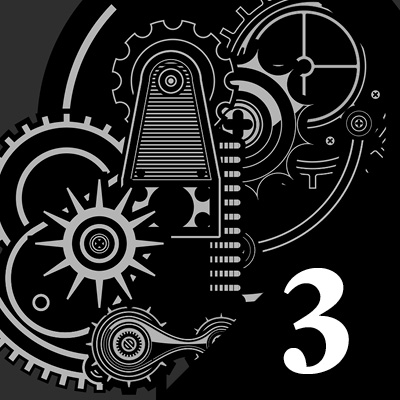Lives of Machines & The Industrial Revolution: 5
A GRANITE BAY DESIGN MICROSITE![]()
 Lives of Machines and
Lives of Machines and
The Industrial Revolution: Part 5
Milestones & Terminology
1846
Invention of the Sewing Machine: At a time when people had to make their own clothes at home or pay someone else to sew them by hand, Elias Howe invented the sewing machine that helped revolutionize garment manufacture in the factory and in the home. While working as a journeyman machinist, Elias Howe Jr. wrestled for years to find a way to mechanize sewing. With the family pinched by poverty, his wife sewed for others by hand at home. Watching her sew, Howe visualized ways to mechanize the process. In 1845, he built his first sewing machine and soon constructed an improved model, which he carried to the Patent Office in Washington to apply for a patent. He received the fifth United States patent (No. 4,750) for a sewing machine in 1846. Howe’s model used a grooved and curved eye-pointed needle carried by a vibrating arm. The needle was provided with thread from a spool. Loops of thread from the needle were locked by a second thread carried by a shuttle, which moved through the loop by means of reciprocating drivers. [1]
What is a Machine?
A machine is a physical system using power to apply forces and control movement to perform an action. The term is commonly applied to artificial devices, such as those employing engines or motors, but also to natural biological macromolecules, such as molecular machines. Machines can be driven by animals and people, by natural forces such as wind and water, and by chemical, thermal, or electrical power, and include a system of mechanisms that shape the actuator input to achieve a specific application of output forces and movement. They can also include computers and sensors that monitor performance and plan movement, often called mechanical systems. Renaissance natural philosophers identified six simple machines which were the elementary devices that put a load into motion, and calculated the ratio of output force to input force, known today as mechanical advantage. Modern machines are complex systems that consist of structural elements, mechanisms and control components and include interfaces for convenient use. Examples include: a wide range of vehicles, such as trains, automobiles, boats and airplanes; appliances in the home and office, including computers, building air handling and water handling systems; as well as farm machinery, machine tools and factory automation systems and robots. [2]
“Unlike the objective of far too many companies, manufacturing is not about a quick ‘exit.’ It is centered on long-term value creation.”
Hamdi Ulukaya
The Industrial Revolution



Disadvantages of Industrialization: Although there were numerous advancements during the Industrial Revolution, rapid progress caused many issues. As workers left their farms to work in factories for higher wages, it led to a shortage of food production. The sharp increase in the number of factories caused an increase in urban pollution. Pollution wasn’t contained only in the factories; as people flocked to the cities, living conditions became deplorable as the urban resources were overwhelmed. Sewage flowed in the streets in some cities while manufacturers dumped waste from factories into rivers. Water supplies were not tested and protected as they are today. As a result, regulations, and laws were enacted to protect the population. The Industrial Revolution provided an incentive to increase profits, and as a result, working conditions in factories deteriorated. Long hours, inadequate remuneration, and minimal breaks became the norm. Child labor was a significant issue. Health issues arose for many of the factory workers giving rise to the labor movement throughout the U.S. [3]
[1] is from one of two sources, either Riyasamdani or Historic UK. [2] is from Wikipedia and [3] is from The Gutenberg Project section on The Industrial Revolution. The period photographs are from a variety of public domain sources. You can use the thumbnail gallery below to navigate through the site.











